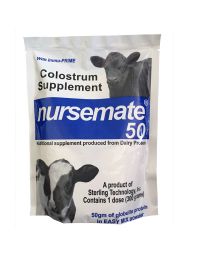This article is provided by SCCL.
On farms across America, it is common practice to hand-deliver colostrum to newborn dairy calves. Although it varies amongst each operation if they choose to feed maternal colostrum or a colostrum product, each calf is getting a measured feeding of colostrum. In contrast, when beef calves are born, they are not commonly fed by hand as cattlemen typically depend on the calf to suckle enough colostrum from the dam. Data shows, only 1 in 5 dairy calves on average have failure passive transfer (FPT), whereas 1 in 3 beef calves have FPT. This means we should not assume that every beef calf is receiving sufficient colostrum from the dam within the first few hours of life.
To prevent this, let’s discuss when beef calves should receive a colostrum supplement or replacer to best ensure calves are getting the immunity and energy they need.
Risks of Dystocia
When a calf is born and consumes colostrum within the first two hours of life, it can typically absorb about 30-40% of the immunoglobulins (IgG) in the colostrum. This efficacy of absorption can quickly be disrupted by stressful calving events like dystocia. Hard-pulled calves or calves with abnormally long presentation time can show reduced absorption rates of 20-26%. This means those stressed calves should not rely entirely on maternal colostrum from the dam and need to be fed higher IgG levels to meet their needs for successful passive transfer of immunity. In addition, these calves are usually weaker and slower to get up to nurse, and delayed colostrum consumption can also decrease their absorption rate.
To ensure these stressed calves receive the colostrum they need, we recommend tube-feeding a minimum of 200g IgG replacement within the first two hours of life. If they do not stand to suckle from the dam within six hours of that initial feeding, we recommend following up with an additional 100g IgG supplemental feeding.
Night Calving
Although we cannot avoid calves being born in the middle of the night, we can be prepared to properly manage those calves without adding stress to the cattleman. Night-born calves are typically not monitored as diligently as those born throughout the day. As soon as a calf is born, its absorption of IgGs is at its peak, and after about four hours it starts to rapidly decline. So, we need to be sure night-born calves do not have delayed colostrum consumption resulting in reduced IgG absorption putting them at risk of failure passive transfer.
In order to prevent this, night-born calves should be quickly fed a full colostrum replacer (200g IgG) so that the person on watch does not have to sit to monitor how rapidly the calf gets up to nurse. If the calf was born several hours before it was noticed, it should also be immediately fed a colostrum replacer since it should not be assumed that calf has already nursed to receive sufficient colostrum from the dam.
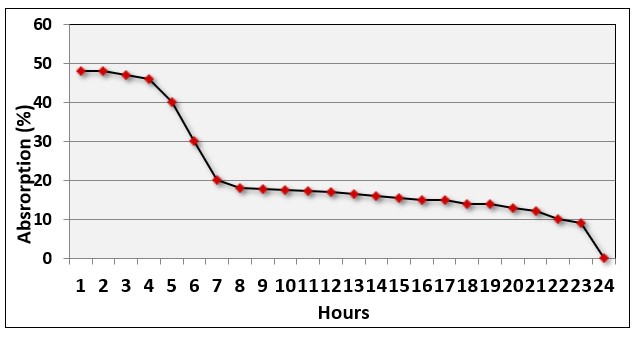

Cold Stress
Calving season can take place during some of the harshest weather conditions. Newborn calves born in cold weather can be at risk for hypothermia. USDA estimates approximately 95,000 calves die each year of hypothermia. The best method to prevent hypothermic calves is to provide calves a potent energy source to thermoregulate. Colostral fat, found in only whole bovine colostrum replacers and supplements, is the most digestible and efficient energy source to allow calves to metabolize the brown fat they are born with. That allows calves the ability to regulate their body temperature and enough energy to shiver to stay warm.
You can start by delivering the calf a colostrum supplement that is high in colostral fat right after birth. If the calf does not stand to nurse off the dam within six hours of providing the supplement, you should follow up with an additional supplement to ensure the calf receives a total of 200g IgG within the first eight hours of life.
First-Calf Heifers
First-calf heifers can have a few issues during calving season. They can be vulnerable to dystocia if they were not bred calving-ease, and they also produce less colostrum volume compared to cows. On average, heifers produce only 3-4 liters in the first milking whereas cows produce 5-7 liters. Low colostrum volume in first-calf heifers can put their newborn calves at risk of not consuming enough colostrum within the first few hours to achieve successful passive transfer.
To avoid this risk, we recommend supplementing all calves born to first-calf heifers with a colostrum product made with whole colostrum. This supplement should be given in addition to calves suckling off the dam. Calves should receive 10% of their birth weight in colostrum volume (for instance a 40Kg calf should receive 4 liters of colostrum). By consuming a supplement plus nursing off the dam, these calves should be reaching that amount.
Calving season can be stressful on both the calves and the ranchers. Although we cannot predict when these challenges will come during calving season, we can be prepared for them by having high-quality whole bovine colostrum products readily available on-farm to use when the need arises.

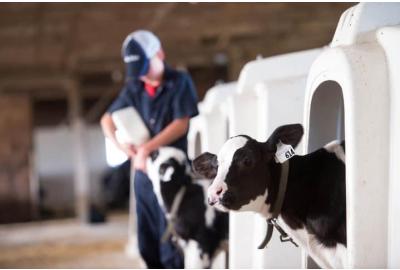
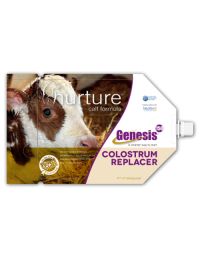
![Calf Solutions Ultra Start 150 Colostrum Replacer [20 lb.]](https://www.armoranimalhealth.com/media/catalog/product/cache/e62b29cbfd1c8a243018c6ffc350ffcf/3/2/32.jpg)
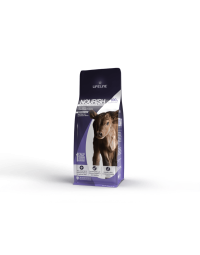
![Lamb and Kid Colostrum Oral Gel [30 ml]](https://www.armoranimalhealth.com/media/catalog/product/cache/e62b29cbfd1c8a243018c6ffc350ffcf/l/a/lamb_and_kid_colostrum_oral_gel_30_ml_.jpg)
